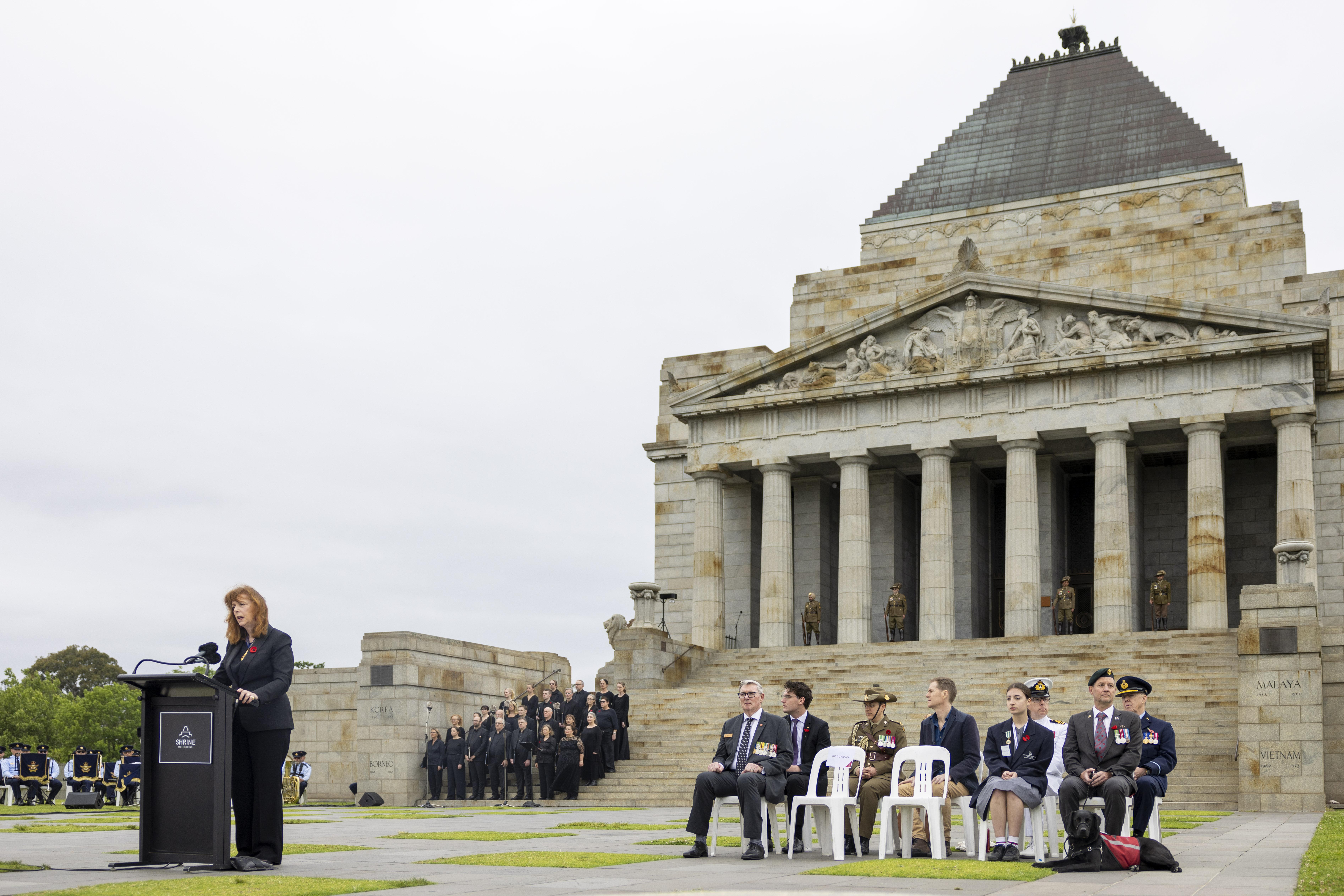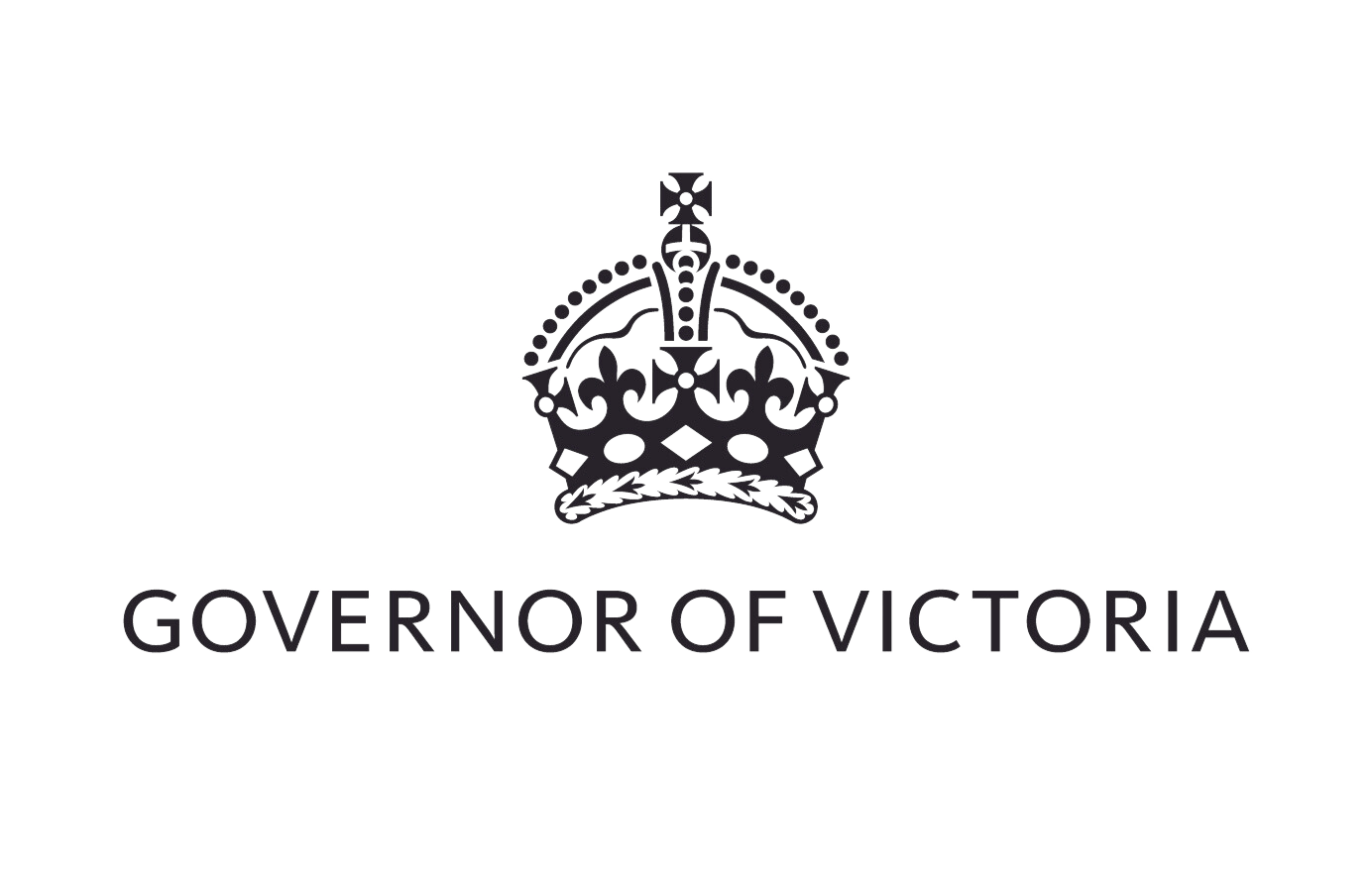
Speech by the Governor at the 2023 Remembrance Day Service.
I begin by acknowledging the Traditional Owners of the unceded lands on which we meet – the Bunurong people – and pay my respects to their Elders, past and present.
Today marks 105 years since the first Armistice Day of 1918.
Armistice negotiations began in a single train carriage stationed in a clearing of the Compiègne Forest.
There, representatives from France, Great Britain and Germany assured the beginning of peace within Europe and an end to an international conflict that had raged for more than four years.
It was a war that cost Australia deeply.
At a time when our population was less than five million, more than 416,000 men voluntarily enlisted and more than 60,000 of them were killed on battlefields across the Western Front and the Middle East.
In my family, one of my great uncles was wounded at Ypres.
On that first Armistice Day in 1918, the reaction to this newfound peace was mixed.
Soldiers on the front described feelings of joy and surprise. Many expressed a sense of disbelief.
At home, the armistice brought conflicting emotions as well.
Women faced a shift in their newfound freedoms.
For Indigenous soldiers returning from war, it became clear that wartime camaraderie didn’t always extend to the home front.
And, families began the long and anxious wait for the return of loved ones. Those that did return, carried the physical and psychological effects of war, facing high mortality in the post-war period.
More than a century on, 11 November remains a day of mixed emotions as we remember the Australian women and men who have fought in wars and armed conflicts across the world.
British soldier and survivor of the Burma-Railway, Eric Lomax once said, “remembering is not enough, if it simply hardens hate.”
It’s important that we use this day to remember the sacrifice of our many brave servicewomen and men.
Those struggling with the physical and psychological scars left by a conflict.
And those who never made it home.
But, it is also important that we remember the lessons offered by these conflicts.
To commit ourselves and our community to the causes of tolerance and understanding. To embrace the differences of others, rather than shy away from them.
Not far from here, the Australian Turkish Friendship Memorial sits in the King’s Domain gardens.
This memorial sculpture demonstrates the role of artistic expression in helping us comprehend the implications of war. The seeds of a Turkish pine sit alongside an Australian casuarina, representing Gallipoli’s role in planting the seeds of friendship between our two nations.
Inscribed along the base of the memorial sculpture, are the words of Türkiye’s first president, Mustafa Kemal Atatürk.
He argued that “there is no difference between the Johnnies and the Mehmets” and that allied soldiers who lost their lives at Anzac Cove “are now our sons as well.”
Those same words are written on a monument at Gallipoli, tying our two nations together through shared memory and a commitment to heeding the lessons of the past.
Much has changed since that first Armistice Day, here in Victoria, and across the nation.
As Victoria grows and changes, it is more important than ever that we learn from the lessons of the past.
That when faced with difference, we choose curiosity.
When met with intolerance, we choose understanding.
And when confronted with conflict we pursue peace.
Lest we forget.
